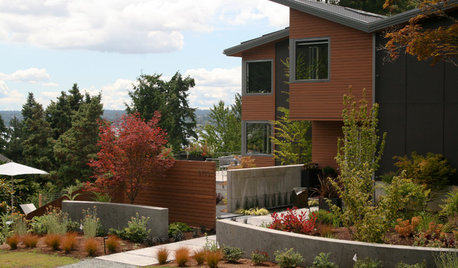Lawn Rehab with Bermuda: a few questions
NCSU_MSE
12 years ago
Related Stories

EARTH DAYThe Case for Losing the Traditional Lawn
Work less, help the environment and foster connections by just saying no to typical turf
Full Story
GREAT HOME PROJECTSHow to Replace Your Lawn With a Garden
New project for a new year: Lose the turfgrass for energy savings, wildlife friendliness and lower maintenance
Full Story
FRONT YARD IDEASBefore and After: Front Lawn to Prairie Garden
How they did it: Homeowners create a plan, stick to it and keep the neighbors (and wildlife) in mind
Full Story
SAVING WATERHouzz Call: Are You Letting Go of Your Lawn?
Many facing a drought are swapping turf for less thirsty plantings. If you’re one of them, we’d like to hear about it
Full Story
LANDSCAPE DESIGNInside Houzz: Divine Proportions Make for a Dream Landscape
Spirals based on the golden ratio give a Washington yard out-of-this-world appeal, at the hands of a designer found on Houzz
Full Story
EARTH DAY5 Ideas for a More Earth-Friendly Garden
Consider increasing the size of garden beds, filtering rainwater and using plants to reduce energy use
Full Story
GARDENING GUIDESLessons in the Rewards of Selfless Gardening
Let go of gardening for your own vision and watch the garden’s own true vision come forth
Full Story
GARDENING GUIDESHow to Stop Worrying and Start Loving Clay Soil
Clay has many more benefits than you might imagine
Full Story
KITCHEN DESIGNThe Cure for Houzz Envy: Kitchen Touches Anyone Can Do
Take your kitchen up a notch even if it will never reach top-of-the-line, with these cheap and easy decorating ideas
Full Story
LANDSCAPE DESIGNIs It Time to Consider Fake Grass?
With more realistic-looking options than ever, synthetic turf can be a boon. Find the benefits and an installation how-to here
Full Story







grasshole
NCSU_MSEOriginal Author
Related Professionals
Manhattan Beach Landscape Architects & Landscape Designers · Allentown Landscape Contractors · Edmond Landscape Contractors · Berkeley Heights Landscape Contractors · Estelle Landscape Contractors · Laguna Hills Landscape Contractors · Lakeville Landscape Contractors · Lantana Landscape Contractors · Lynchburg Landscape Contractors · Merced Landscape Contractors · Mount Kisco Landscape Contractors · New Cassel Landscape Contractors · Old Saybrook Landscape Contractors · Pine Hills Landscape Contractors · Snoqualmie Landscape Contractorsgrasshole
jdo053103
NCSU_MSEOriginal Author
grasshole
brettn_10
dchall_san_antonio
brettn_10
texas_weed